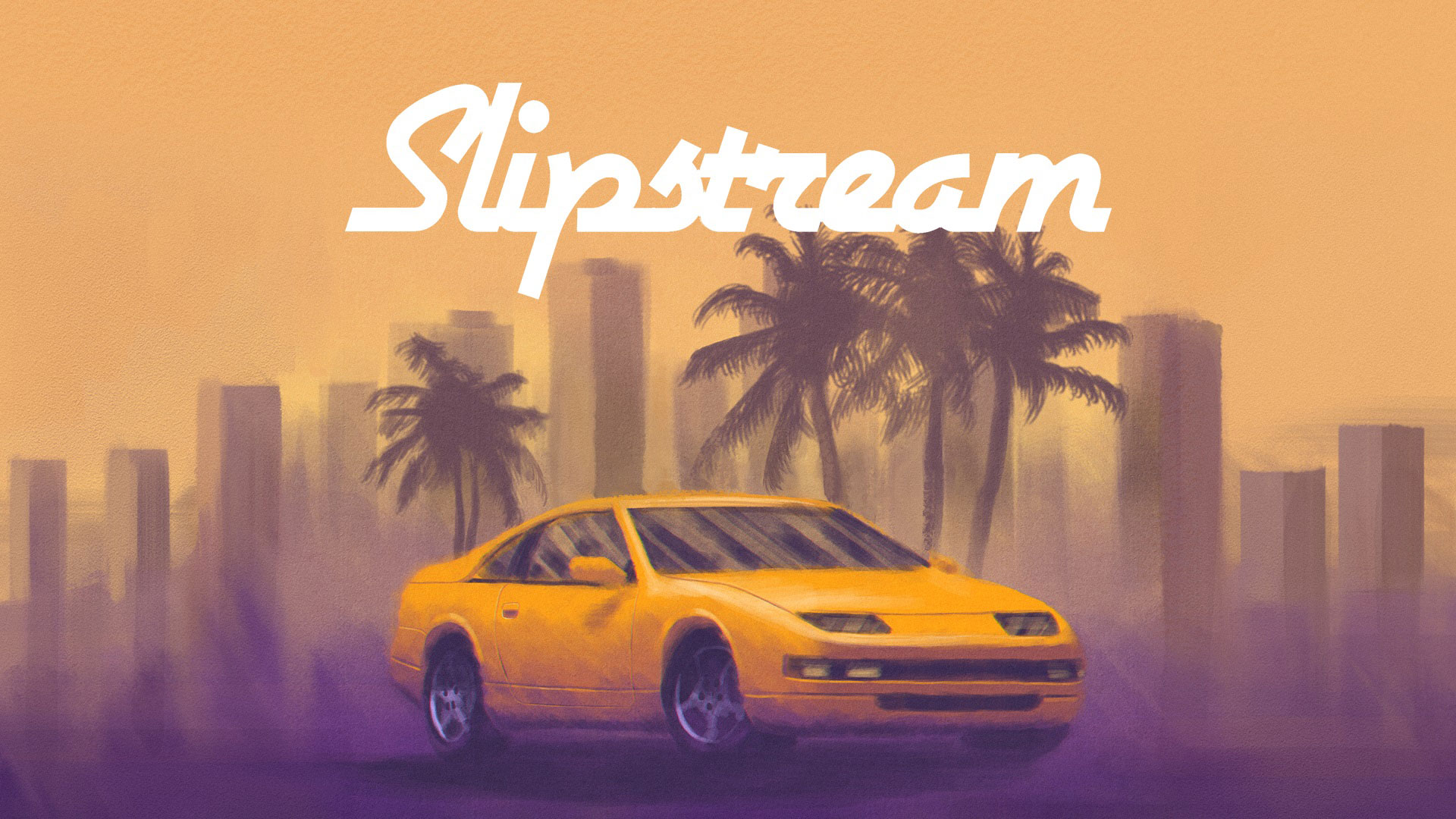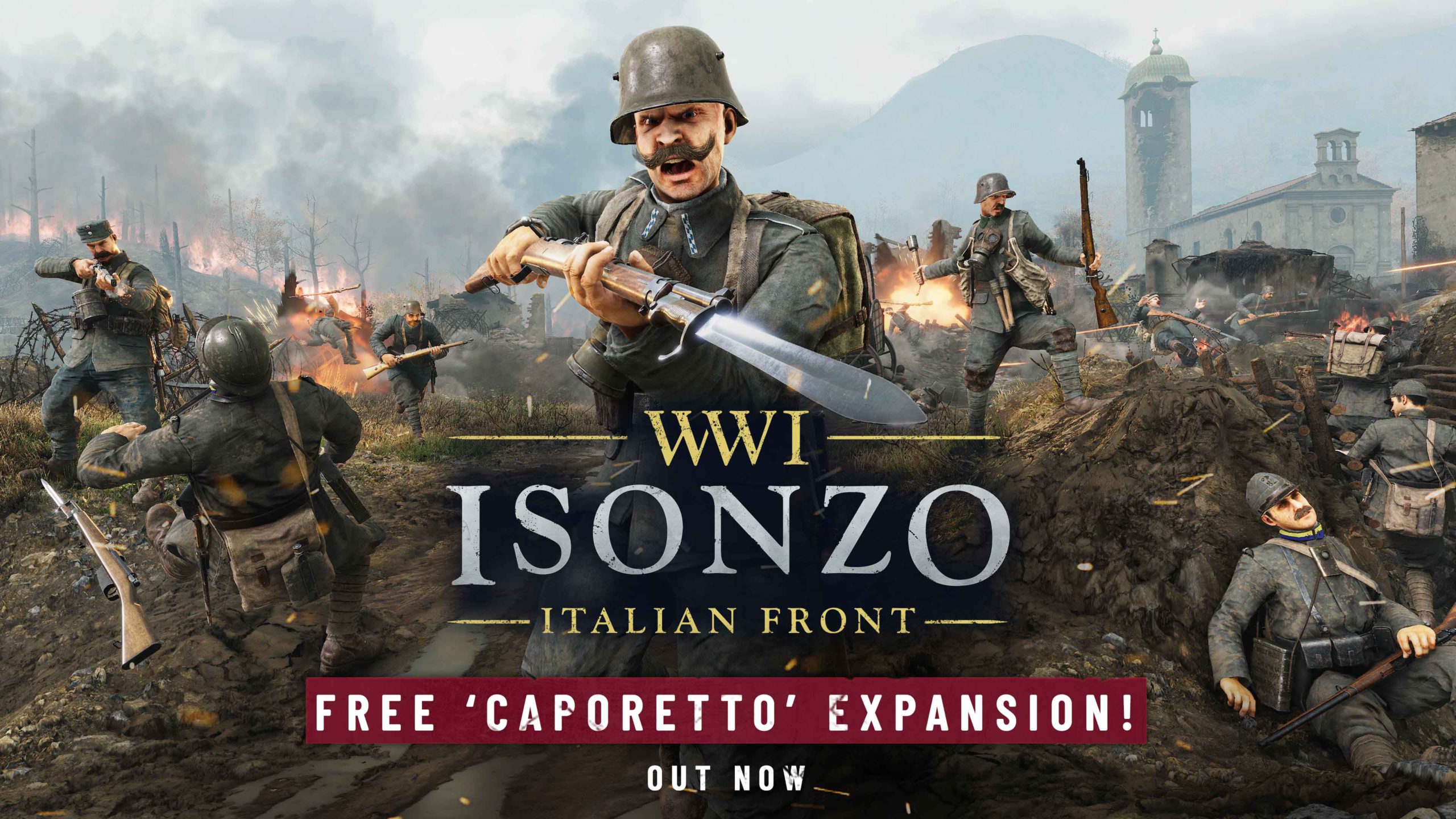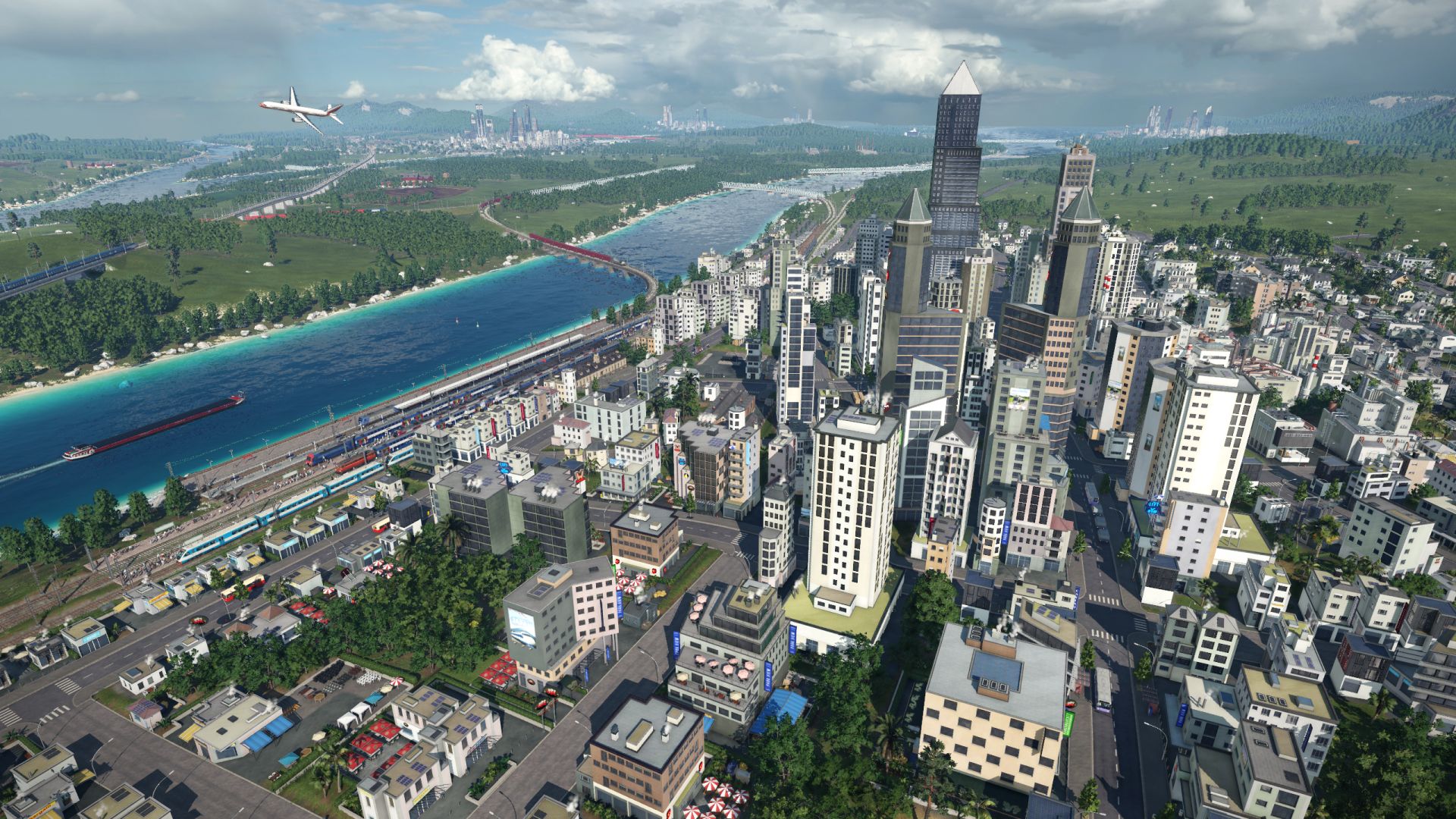GAMES
Slipstream: Reimagining Classic Arcade Racing by a Brazilian Solo Developer

Summary
- Conceived and created by a solo developer.
- Unique mechanics for an arcade racer.
- Soundtrack integrated and inspired by the gameplay.
Learning to Make Games and Realizing It was Possible to Make a Living out of It
My name is Sandro de Paula, from Brazil, and I’ve wanted to be a game developer since childhood. I had my first real contact with game development tools when I was 14, but it didn’t seem like a viable career for me back then. There weren’t many opportunities in my country, so I decided to pursue other interests, such as music and journalism. Around 2012, when the first wave of commercially successful indie games happened internationally I was convinced it was now possible to make it as a solo developer, and began working on it more seriously, learning and experimenting. My first “real” project was a mobile runner pixel art game called Meow Sushi Night, released for Android in 2014, and then I started working on Slipstream soon after.
The Origins of Slipstream
This might be unexpected, but the idea behind Slipstream started as just a technical curiosity. I had recently finished Meow Sushi Night and I felt I understood how 2D graphics worked reasonably well, but I kept wondering: “How did those classic racing games create a 3D perspective in pure 2D hardware?”. I did a little research and was immediately fascinated by the pseudo-3D technique, decided to try to make my own implementation, and the project grew from there. I had played some classic racing games before, such as OutRun, F-Zero and Top Gear, but it didn’t really become a passion until I started working on Slipstream. Lots of racing games focus on creating a realistic physical simulation of how cars work, but the racing genre also lends itself very well to a more stylized, expressive approach, and that’s the direction I tried to follow. I wanted to give people the fantasy of a colorful worldwide road trip, like OutRun did back then.

The Evolution of the Mechanics. What Makes Slipstream a Different Arcade Racer?
I think the drifting and the slipstream have always been essential to the game. The first demo I published in 2015 had neither, and the gameplay felt too basic and barebones back then. Despite being the name of the game, the slipstream mechanic wasn’t there from the start, but it was a natural fit. The ideas for both the drifting and the slipstream were inspired by OutRun 2006/Coast 2 Coast, which was an attempt by Sega themselves to modernize the gameplay of the original OutRun. I really dislike manual transmission mechanics in old racing games, switching gears manually in a non-realistic racer is not very fun, so I never considered using that as a mechanic, but the game still needed something for the player to do besides accelerating and turning. The rewind was the most recent addition to the core mechanics, and I think it was a good one, it gives the player a strategic opportunity to retry a hard turn or undo a crash. All the mechanics were added very naturally, I didn’t plan too much, I just tried stuff out and iterated until it felt fun or satisfying.

The Slipstream Soundtrack and Its Inspirations.
The soundtrack in Slipstream is a very characteristic part of the game. It was created by my friend and collaborator from the USA, Stefan Moser, aka Effoharkay, who also made the soundtrack for my Meow Sushi Night. The soundtrack was created in parallel with the game, so it had a lot of direct influence over how the game turned out. At times, I felt like I was creating a game for the soundtrack, instead of the opposite. The game would definitely not be the same without those songs. From my perspective, it’s a mix of influences, from80s synthpop, 2010s vaporwave and synthwave to jazz fusion and eurobeat. The soundtrack is a diegetic part of the game, it’s the music you’re playing in the car while driving, so it isn’t made to fit a particular track or place, but to set the atmosphere and tone for the game as a whole.

“The music for Slipstream was composed over the course of development, which was cool in that requirements, inspirations, and references kept changing,” says Stefan. “At first we were really into synthwave/synthpop that was popular around 2009-2015. Then of course Outrun and other classic driving games/sims came into the mix. We eventually trailed into vaporware, eurobeat, jazz fusion, etc… The idea of having a radio playing the music from the car made it pretty easy to imagine the game as an album rather than a soundtrack.” As for media references and inspiration, Stefan says, “I remember the hard hitters like Drive and Outrun, but at the time I remember trying to look really hard at the art, composing to gameplay, and trying to feel invigorated from that. As for other artists, I was listening to a lot of Com Truise, Electric Youth, Jean Luc Ponty, Casiopea, and plenty more at the time .”
With a killer soundtrack and game mechanics that distill classic arcade racers into the modern arena, I hope Slipstream combines nostalgia and challenging gameplay for lots of fun – and it’s available right now on Xbox!

Slipstream
BlitWorks
$9.99
Slipstream is a racing game inspired by the visuals, music, games and cars from the late 80s and early 90s. It’s built with an authentic retro feel and unique graphics. The soundtrack, drawing from synthpop and jazz fusion influences, sets the tone for a race across a variety of exotic locations from all around the world, including cities, deserts, forests, mountains and beaches. Drifting and slipstreaming mechanics add depth to the driving gameplay, and the result is a challenging and exciting experience.
GAMES
This Week’s Deals with Gold and Spotlight Sale

GAMES
The German Empire Marches to Italy in a Free Expansion Today

We have a new expansion for our WW1 Italian Front FPS game Isonzo releasing today! It’s the first part of our Caporetto season of free expansions, and features a whole new faction with the arrival of the German Empire on the Italian Front, and brings a new map for the Offensive game mode. There will be two more releases in the Caporetto season, each one with a new map to ultimately link together into a three map Caporetto Offensive.
The German faction comes with more than ten new weapons, as well as historically accurate uniforms and equipment. This first Caporetto map sees you taking part in the early stages of the Twelfth Battle of the Isonzo, with German troops assaulting Italian positions on the road to Caporetto. Historically it was a military disaster for Italy which brought down the government – but maybe things can go differently with you on the battlefield?
The update sees new uniforms and equipment from the German Empire for Isonzo’s six classes: Rifleman, Assault, Engineer, Officer, Marksman and Mountaineer. For those who aren’t familiar with the game, each class has different weapon, gear and perk options that allow you to specialize your play style within the overall focus of the class. For instance, Marksmen are always sharpshooters, but a lot depends on your loadout. You could be a long-range sniper and observer identifying and eliminating high value targets with a scoped rifle, or you could equip body armor to take and hold a front line position with deadly accurate mid-range fire. Every class has choices to make in this regard.

In Isonzo’s signature Offensive game mode, one side must attack and break through multiple defensive lines. Thick layers of barbed wire, trenches, and whatever extra defenses the enemy engineers put together will stand in the way of a successful attack. Objectives can be taking and holding key points, or planting dynamite to sabotage enemy supply stashes or heavy artillery guns.
The new Caporetto map – the first of three in the season – is a huge battlefield based on the strategically important Monte Kolovrat. There are five defensive lines, where each line has two objectives for the attackers before they can advance further. While in the historical Battle of Caporetto both German and Austro-Hungarian forces were involved, in Isonzo we’ve chosen to focus on the German contribution, so the map recreates the stunning German advance from the town of Tolmein all the way to Kolovrat Ridge. It’s a damp, overcast day when the attack begins, and the attackers must first cut their way through lines of wire to break into a devastated town – including capturing a church defended by multiple heavy machine gun positions. Fortunately, in Isonzo there are many tactical options available to deal with such strong points: artillery barrages, smokescreens, snipers, rifle grenades, even poison gas. From there, it becomes a literal uphill battle for the German attackers as they begin to climb towards the peak of Kolovrat Ridge. They’ll need to sabotage bunkers and capture command posts while navigating rocky trenches and steep forested slopes. At the penultimate fourth defensive line there is a huge siege mortar to sabotage and a cluster of houses providing cover to the Italian defenders – then it’s one last climb to reach the final objective: Hill 1114. If the Germans can take it, the Italians will finally be the ones fighting uphill as their reinforcements stream in to try and counterattack.

Of course, things are no walk in the park for the defenders either – although it’s easier to maneuver when going downhill, and it’s much simpler for officers to deploy flares to call in support, the extensive trench lines can become a liability once the Germans get a foothold, providing cover as they advance. Some of the Italian defensive positions can be exposed against the sky, making it easy for German marksmen to pick off targets. Italian engineers should make good use of their construction abilities to put down additional sandbags and lay out extra wire to prevent German assault troops sneaking through the trees to flank trenches with their grenades or light machine guns.
As we mentioned before, historically the Battle of Caporetto was a disaster for the Italians. Appalling leadership led to poorly motivated and unprepared troops falling apart in the face of the combined Austro-Hungarian and German armies using cutting edge infiltration tactics. The Italian soldiers were not allowed to retreat until too late, and in the end hundreds of thousands would surrender. After Caporetto the top Italian general was fired and replaced by someone far more competent, who managed to turn the war around for the Italians. In Isonzo, it’s a more fair fight where both sides have an equal chance of winning, if they can use all the tactical options available better than their opponents.
The release will also bring other improvements to the game, including a prestige mode and higher level cap. Additionally, for those who want more options for visual customization of their character, the Royal Units DLC is releasing alongside the free expansion and contains uniforms from the German Kingdoms of Bavaria and Württemberg. Though part of the German Empire, these states had their own distinctive uniforms which we’ve carefully recreated with the same accuracy and attention to detail as with the other uniforms in the game.

The Battle for Caporetto Begins…
Isonzo is available right now on the Microsoft Store for Xbox, and the free Caporetto expansion is out today! Plenty of time to master the art of mountain warfare before the German Empire joins the action on the Italian Front. Follow us to get the latest development news as we add the finishing touches!
We’ll see you in the trenches!

Isonzo
BlackMill Games
$29.99
World War One expands to the mountains of the Italian Front – beautiful but deadly in equal measure. Inspired by the two year struggle for control of the Isonzo river valley and the Alps during World War One, Isonzo elevates the WW1 Games Series, figuratively and literally.
From the makers of Verdun and Tannenberg…
Take part in historical offensives from the Sixth Battle of the Isonzo to the Strafexpedition. Reflecting the course of the actual battles, as the attackers advance the fighting will shift through vastly different landscapes within a single offensive: from hillside fortresses to mountain trenches and fierce urban combat on city streets. Everything is recreated based on research and field trips, from sound effects and uniforms down to the houses, vineyards and trenches you’ll be fighting over.
The new Offensive game mode puts you right in the middle of key historical offensives on the Italian Front. Lead the charge across stunning Italian landscapes as you choose your path to victory – cut paths through barbed wire, flank your enemies by following mountain trails, or man a mortar to blast a way through. Shape a dynamic battlefield by laying sandbags and wire, placing ammo crates, deploying trench periscopes or sniper shields, and more.
Call in support with a unique historically accurate flare system: flare guns can mark targets for artillery or biplane flybys, or different colored flares can be used to guide your team. Once the big guns have softened up the enemy, finish the job at close quarters with an Arditi dagger or mountaineer’s pickaxe. Man heavy machine guns, mortars and even mountain guns for more direct fire support.
Choose from six classes based on historical combat roles and build your loadout from a selection of weapons, equipment and perks linked to that class, giving flexibility and variety while staying grounded in what real soldiers might have carried. You’ll be operating wire cutters, bandaging yourself and wounded teammates, and blowing the whistle to start an assault. One shot can kill and even lighter injuries can lead to quickly bleeding out.
Being an effective soldier in Isonzo is not just about being a good marksman. Mastering the terrain is also key – the mountain can be a friend or foe. Learn how to navigate well to maintain cover and surprise your enemies or support your allies.
Finally… watch out for the dreaded poison gas. You’ve never experienced WW1 action quite like this!
Isonzo key features include:
• MOUNTAIN WARFARE: Assaulting mountain fortifications, battling through ruined towns, and fording rivers are just a few of the challenges you’ll face as you fight your way through numerous enemy positions
• TACTICAL MULTIPLAYER FPS: Choose your role and loadout carefully to survive this high altitude combat – play a sniper to pick off the enemy engineers before they can cut your wire, use rifle grenades to clear enemy machine guns, and much more
• WORLD WAR ONE GAMEPLAY: Historical Offensive game mode based on real battles and focused on the unique challenges of Alpine warfare. Fight with 30+ WW1 weapons, poisonous gas attacks, and intense artillery barrages
• BUILD FOR VICTORY: Place your own wire, sandbags, trench periscopes, and more! Whether you’re digging in or on the attack, shaping the battlefield to your advantage will be key to victory
• FACES OF WAR: Make every class your own by picking from a variety of historically class-appropriate uniforms, accessories and headgear. As a finishing touch, you can even pick your mustache from several famous period-accurate styles!
• AUTHENTIC WW1 ATMOSPHERE: Accuracy in everything from maps and weaponry to music and the uniforms – fight for the Kingdom of Italy, the German Empire or the Austro-Hungarian Dual Monarchy
MORE GAMES IN THE AUTHENTIC WW1 GAME SERIES
Immerse yourself in more WW1 action with our other standalone titles Tannenberg and Verdun. Experience trench warfare on the Western Front in Verdun, or maneuver for control of key sectors in Tannenberg on the Eastern Front. These authentic WW1 shooters let players choose from a range of squads from across the war, as they fight for control of the ever-changing frontlines.
GAMES
Transport Fever 2: Console Edition is Bringing the Full Transport Tycoon Experience to Xbox

Today, we proudly share a sneak peek into the development of Transport Fever 2: Console Edition, and how we managed to bring the full transport tycoon experience to Xbox.
Transport Fever is a very popular and highly rated transportation tycoon franchise on PC. Its latest entry, Transport Fever 2, delivers a level of size and detail never before seen in the genre. The goal of the game is to build a successful transportation company by constructing railroads, streets, water and air lines. Starting in the 19th century, the player connects towns and industries to transport both passengers and cargo. In addition to a customizable free game mode, there is also a fully-fledged campaign mode with challenging missions set in real-world transportation history.
After the huge success of Transport Fever 2 on PC, it was only logical to bring the experience to consoles as well. Not only that, but no efforts were spared to give the console community the full experience that made the game great on PC. In order to achieve this, the engineers at Urban Games had to pull some rabbits out of their engineers’ hats.
Always providing the freshest layer of paint
One of the most cherished features of Transport Fever 2 are its highly detailed vehicles. The game comes with more than 200 lovingly hand-modeled trains, ships, and airplanes, each sporting multiple 4k textures and normal maps.
On PC, it is easily affordable to have all the models and textures in memory whenever needed, as a typical rig has 16 GB of RAM and a GPU with a dedicated extra memory. Consoles, however, are built differently. They have a unified architecture with an overall smaller amount but ultra-fast memory. The key to make it work on consoles is texture streaming, which allows to clear textures of models that are not in view anymore. Moreover, this technology is used in Transport Fever 2 to constantly load textures at the highest affordable resolution to present the stars of the show, like the classic Class A 3/5 steam locomotive, in their best coat of paint at all times.
Keeping the ground like a console pro
A trademark of Transport Fever 2 are its huge maps. During development of the game, it was always paramount to provide a real sense of scale. The engine should allow for maps where a high-speed train, such as the famous Japanese Shinkansen, can really make use of its superior speed. So, a lot of effort was put into designing a highly effective terrain rendering pipeline that can handle maps of more than 120 sq miles of size with a detail resolution of almost 1 yard. Central to this is a dynamic terrain tessellation algorithm on the CPU that, while costing a bit of extra memory, makes sure the engine can render these maps on a wide variety of PCs.

Now, enter the world of consoles with their incredibly well-designed GPUs and graphic APIs. Here, the hardware can be leveraged very well for terrain rendering by making use of the GPU tessellation feature. This feature generates the render mesh for the terrain fully on the graphics card, saving valuable processing time for the complex economy and city growth simulations. While generating more triangles, the hardware approach still costs less memory overall due to its efficiency. So vast maps can be viewed from a bird’s view high up in the sky and seamlessly zoomed in down to individual rocks on a riverbank.
Inspiring the inner architect
Finally, let’s talk about constructions, a central and defining part of the Transport Fever 2 experience. Constructions are large assemblies that consist of dozens of assets, street segments, ground decals and terrain modifications. Think of structures like airports, train stations, docks, highway crossings, and many more. Anything that is needed to build a vast transportation empire.
For a smooth construction experience, it is key that the player really feels that he has precise control over the building placement. On PC, constructions are typically built using the mouse. As the average PC user is very well adjusted to this method of input, it is sufficiently performant to calculate the entire construction each frame and place it under the cursor. However, on consoles, the best way of building constructions is to have them always kept in the center of the screen and move the camera along the map for placement. And moving the camera needs to be as smooth as silk.

So, for the console release of Transport Fever 2, the construction preview pipeline was overhauled. All dynamic calculations are now performed in the background while a static preview of the structure and its underlying ground plan are shown. Not only are constructions now completely stable in terms of FPS, but they also give feedback to the player on what environment features the construction would tear down when built.
Let’s get tycooning on console
We are very excited to bring the Transport Fever franchise to consoles for the first time ever with the release of Transport Fever 2: Console Edition on Xbox Series X|S and Xbox One in February 2023, and we hope you will enjoy it as much as we did developing it.
-
SEARCHENGINES6 days ago
Daily Search Forum Recap: April 19, 2024
-

 WORDPRESS7 days ago
WORDPRESS7 days agoHow to Make $5000 of Passive Income Every Month in WordPress
-

 WORDPRESS6 days ago
WORDPRESS6 days ago13 Best HubSpot Alternatives for 2024 (Free + Paid)
-

 MARKETING6 days ago
MARKETING6 days agoBattling for Attention in the 2024 Election Year Media Frenzy
-

 SEO7 days ago
SEO7 days ago25 WordPress Alternatives Best For SEO
-

 WORDPRESS6 days ago
WORDPRESS6 days ago7 Best WooCommerce Points and Rewards Plugins (Free & Paid)
-

 AFFILIATE MARKETING7 days ago
AFFILIATE MARKETING7 days agoAI Will Transform the Workplace. Here’s How HR Can Prepare for It.
-

 MARKETING7 days ago
MARKETING7 days agoTinuiti Marketing Analytics Recognized by Forrester


















You must be logged in to post a comment Login